
An Ophthalmic Marketing Manifesto
23 Minute Read
manifesto [ma-nuh-fe-stoh]: a written statement declaring publicly the intentions, motives, or views of its issuer. Related to a 14th century English term meaning “easily recognized.”
(nb: At least, I hope what you see here will be easily recognized. If not, that’s ok. But if you will indulge me, and you have the time, I’m confident we will get there.)
Manifesto Index
- The Vision (the 'Why'): Build A Resilient Practice and Protect Your Future/Practice/Wealth by...
- The Goal (the 'What'): Becoming The Preeminent Premium Services Practice using...
- The Strategy (the 'How'): The 7R Marketing Strategy
- Postulate 1: Rethink how you think about things
- Postulate 2: The less we know about something, the more we think we know about it
- Back story - Who am I and why am I telling you this?
- Postulate 3: Information is not the same as knowledge
- Postulate 4: There is a science to marketing
- Postulate 5: Good marketing is an investment, not just an expense
- The Tactics: Standing up your tactical and operational flywheels
- The 7Rs and the one R to rule them all
You practice evidence-based medicine.
Why don't you practice evidence-based marketing?
This, in a nutshell, is the premise of our 7R Authority Marketing Strategy, the core of our Manifesto. In order to practice evidence-based marketing, your marketing endeavors should be measurable, repeatable, scalable and automated. This is accomplished by mapping all of your marketing campaigns (as much as possible) to the 7R Strategies:
- Reputation
- Review
- Retain
- Resell
- Reactivate
- Recruit
- Refer
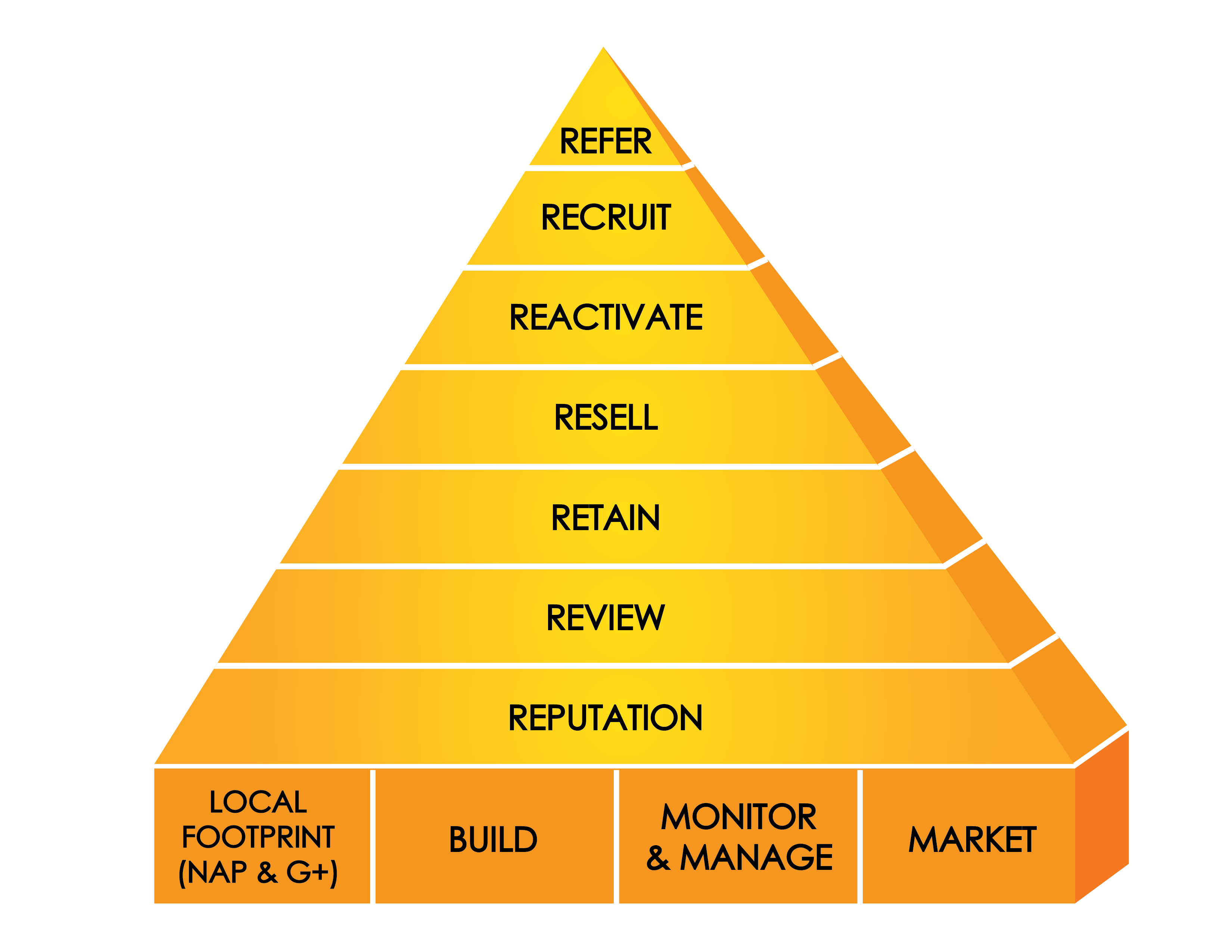
7R Strategy Pyramid, Ultimate Ophthalmic Marketing Guide
We first described this in our book “The Ultimate Ophthalmic Marketing Guide.” We’ll go more into detail on these later. But, first I would like to describe the genesis of the 7R strategy and what makes it more than just a clever tagline.
Side note: Ophthalmology is almost equal parts medical, surgical, and retail and thus much of what we cover here could apply to other medical specialties. So, to any of our non-ophthalmic colleagues who may have stumbled upon this site, welcome, and I hope you will some find some useful nuggets.
Second, after having gone through the chaotic time of a pandemic, 7R has evolved to become 7R+1, signifying that we have now added another “R” to rule them all: Resilience. So this is the one major change since we first launched the 7R concept. And we will talk more about how this will be relevant for any future crisis or catastrophe that your practice may face.
Before we talk about strategy, though, let’s zoom out to a 50,000 foot view. When we first presented the 7R Marketing Strategy, it was a response to seeing practices get bogged down in tactics and gimmicks without any regard to an overall marketing strategy. The results were…well, the results were mostly haphazard and difficult to assess.
So after our book was released, we realized that even before setting a strategy, medical practices needed to think take a higher-level view to ensure alignment among all stakeholders with a vision and a purpose.
The Vision: Build a Resilient Practice

What is the whole purpose of what you are doing?
Why are you practicing medicine?
I mean, beyond all of the altruistic reasons.
After all, you don't go into medicine primarily for the money. There are much easier ways to do that.
That is where the Vision comes in. Maybe you have a dream that your practice will be able to reach out and help people and that you'll have a lasting impact on your community, your profession.
But none of that will happen if you can't protect what you have and what you have built. That's your legacy (hopefully!).
Sure, you can write a Vision Statement (aspirational) and a Mission Statement ('action'-oriented) but those tend to end up on a plaque hung somewhere in a less-traveled place.
But what you really need is to know where you are going (Goal) and how to get there (Strategy).
The Goal: Become The Preeminent Premium Services Practice

I think most of us would agree that the practice of medicine - if not all business in general - has forever been changed by the COVID pandemic. Can you even see yourself ever hugging or shaking hands with a patient again?
And how long and how severe the financial effects are/will be we can’t even begin to assess at this point. And, just in time for the next upcoming recession!
According to a survey of members by the American Academy of Ophthalmology, a majority of practices did not believe that they would return to pre-COVID levels of either size, volume or financial health:
- 47% will be smaller and financially unhealthy
- 26% will return to pre-COVID size and volume, but financially unhealthy
- 14% will be smaller, but financially healthy
- 6% will no longer practice ophthalmology (!)
- 2% of practices will be sold
- Only 6% of practices believe that they will be back to pre-COVID size, volume and financial health.
Almost as dangerous as external forces such as these is an overconfidence - a lack of epistemic humility, if you will - about everything quickly getting back to normal.
" Ignorance more frequently begets confidence
than does knowledge."

Charles darwin | biologist
Going forward, it will be important to keep one eye on what is happening now and the other on what might be happening a few months down the road - and act accordingly.
Why do I say that? Notice that what are listed underneath The Resilient Practice above as potential threats to your practice...
- Catastrophe/Crisis - whether a looming recession or another pandemic
- Cuts to reimbursement
- Competition (although BOM followers know that it's more productive to have a plan and stick to it rather than worry about what your competitors are doing)
- Climate - as in political climate, from D.C. to your state and local milieu
- Complacency - wha..? This means it is all too easy to think that, if things are going well, you are a genius and nothing could possibly imperil your practice
...can also be opportunities (more on that later).
But suffice it to say, achieving your goal during these trying times will take a proactive approach and a coordinated strategy.
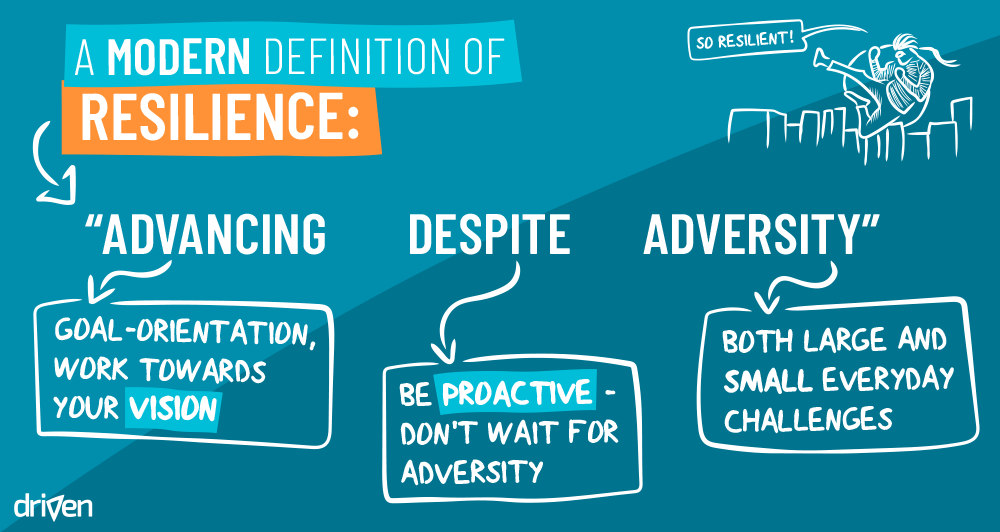
So what is the point of all of this? And how can one make one's practice resilient?
Well, as long as you're asking...
The Strategy: Make Your Marketing Results-driven By Adopting The 7R Marketing Strategy
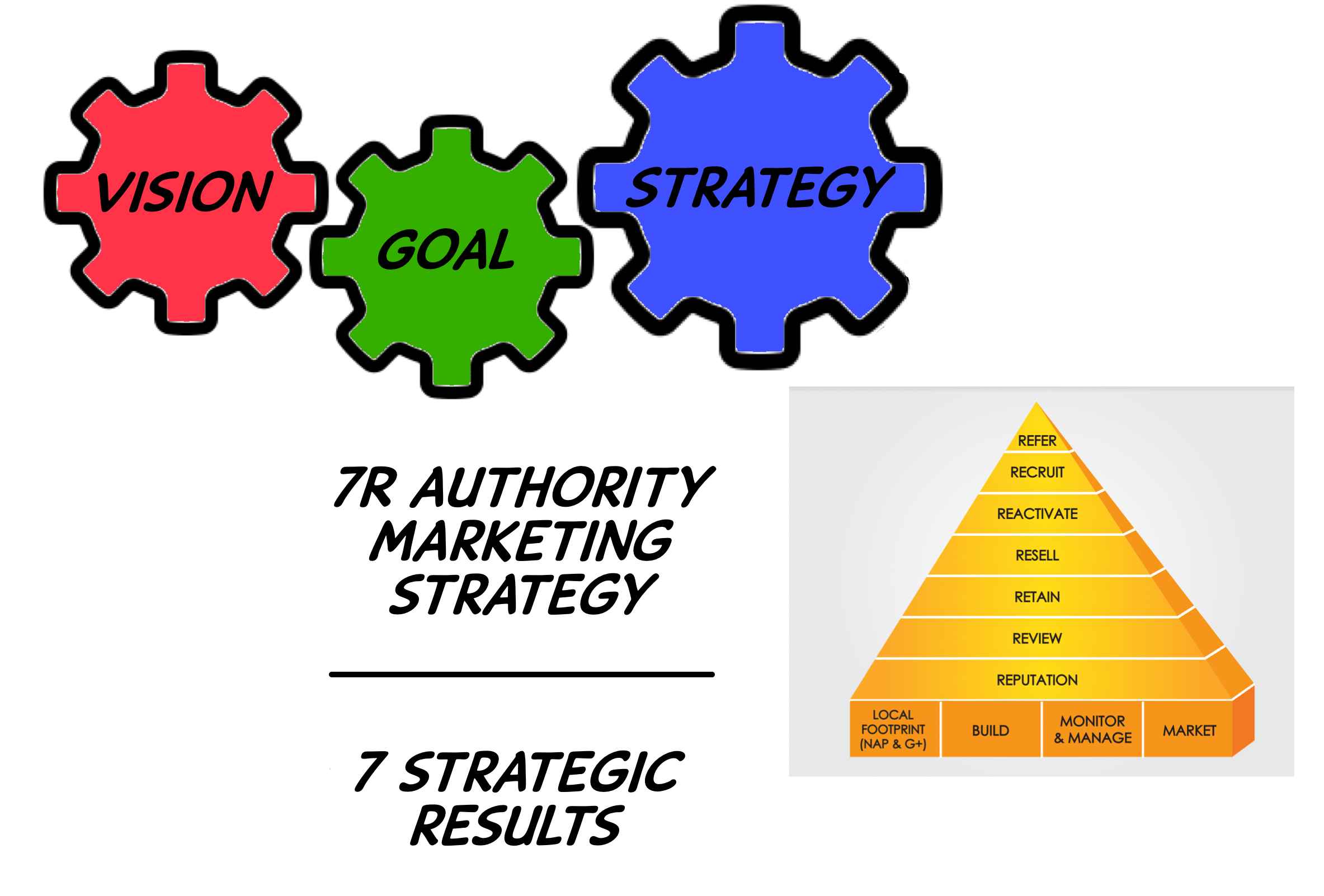
During a crisis such as a recession or a pandemic or a weather disaster, your business may be down for who knows how long so it is easy to pivot to a mindset of just cutting costs during these difficult times - ok, sure, reducing expenses will be necessary - and marketing is usually one of the first things to go on the chopping block, in large part because marketing has traditionally been a squishy expense item with no measurable return on investment. But, did you know that...
Firms that cut costs faster and deeper than rivals don’t necessarily flourish. They have the lowest probability—21%—of pulling ahead of the competition when times get better - Harvard Business Review
We know there's only so much we can do when it comes to CPT-based reimbursement. And anyone who thinks a particular political party has any sympathy to the travails of the medical practitioner is being naive. Nobody feels sorry for doctors.
Yes, we can be smarter about how we practice medicine and how we market our core insurance-based services. But, frankly, we can also hedge our bets by complementing those core services with premium, cash-pay, and ancillary services which we - so far - have more control over.
Someone once said - actually, truth be told, it was a close friend:
"I don't want to see more new patients -
I want to do more surgery!"
Working harder but feeling like we don't have much more to show for it...that's not what signed up for. But by working smarter, we are working more productively, not harder.
Howevevr, if you are only casting a broad net for the masses of 'new patients' - the goal of traditional practice brand marketing - then you are practically guaranteeing that you will have to have to churn and burn to achieve the same revenue as you would if you had a more focused and deliberate approach to marketing.
So this is an opportunity to reassess the role of your practice marketing and to subject it to the same scientific method that you use for new surgical techniques or therapeutic modalities. Because we know that we can be fooled by anecdotes, biases, and poorly designed studies.
Case in point: the hubbub around the treatment of COVID19 with hydroxychloroquine way back when. And, yes, many doctors were also sucked into it. Based on the results of a single French study headed by a scientist of dubious reputation, everyone (including the federal government) started stockpiling the medication for themselves and family members. After all, many of us monitor patients on Plaquenil for potential maculopathy and we never really heard about any serious side effects. So, we asked ourselves, “what do we have to lose?”
But soon after, the randomized trials started dripping out their findings and the results were not so rosy: no real benefit, especially for sicker patients, and reports of serious cardiac events. It turns out that medications don’t necessarily behave the same way for different diseases, even at the same doses.
Thus, the importance of applying scientific critique to the study of medical therapies lest we do more harm than the disease itself.
Why should the non-clinical aspects of your practice be any different?
Ergo: Scientific Marketing!
As I alluded to earlier, we want to take the feelings out of marketing and put in the facts. Using this approach, you can hopefully convince your associates (and yourself) that some previously-held beliefs, what are known as deep memetic frames -
- marketing, schmarketing!
- every dollar spent on marketing is a waste
- free social media is all we need
- we don't need a marketing professional/agency, just get your twenty-something-year-old nephew to run things
- are not scientifically sound. But you have to apply scientific methods to your marketing if you want to back up your assertions with data.
After all, if we were going to asses a new procedure or therapy in your practice, we might do something like this:
Design the study > Allocate your resources > Measure your results > Make any necessary changes to how you practice
If we were going to get scientific with our marketing, we would describe the same thing this way:
Map > Build > Track > Optimize
Now, that's not so hard, is it?
So what does that look like? Well, it looks like our mystical 7R pyramid.

But before we get into the granular details of the 7R Marketing Strategy, I want to set the framework for our discussion. Because without the proper context, all of this might seem superfluous, particularly during times of crisis. I would submit, however, that this is especially the setting in which to consider that.
So, for your consideration...
Postulate 1: Rethink how you think about things
First of all, let me start by saying that it would be very easy, but lazy, of me to just throw a lot of information at you and presume you will simply accept it at face value. And another problem is that the validity of information decays over time; and most of what we read and see we forget shortly after.

Forgetting Curve - David Handel, MD
What does stick in our brains, however, is a concept or a way of thinking. What is known as a mental model.
From Wikipedia:
A mental model is an explanation of someone's thought process about how something works in the real world. It is a representation of the surrounding world, the relationships between its various parts and a person's intuitive perception about his or her own acts and their consequences. Mental models can help shape behaviour and set an approach to solving problems (similar to a personal algorithm) and doing tasks.
A mental model is a kind of internal symbol or representation of external reality, hypothesized to play a major role in cognition, reasoning and decision-making. Kenneth Craik suggested in 1943 that the mind constructs "small-scale models" of reality that it uses to anticipate events.
Here is a graphical overview of most of the mental models that are out there:
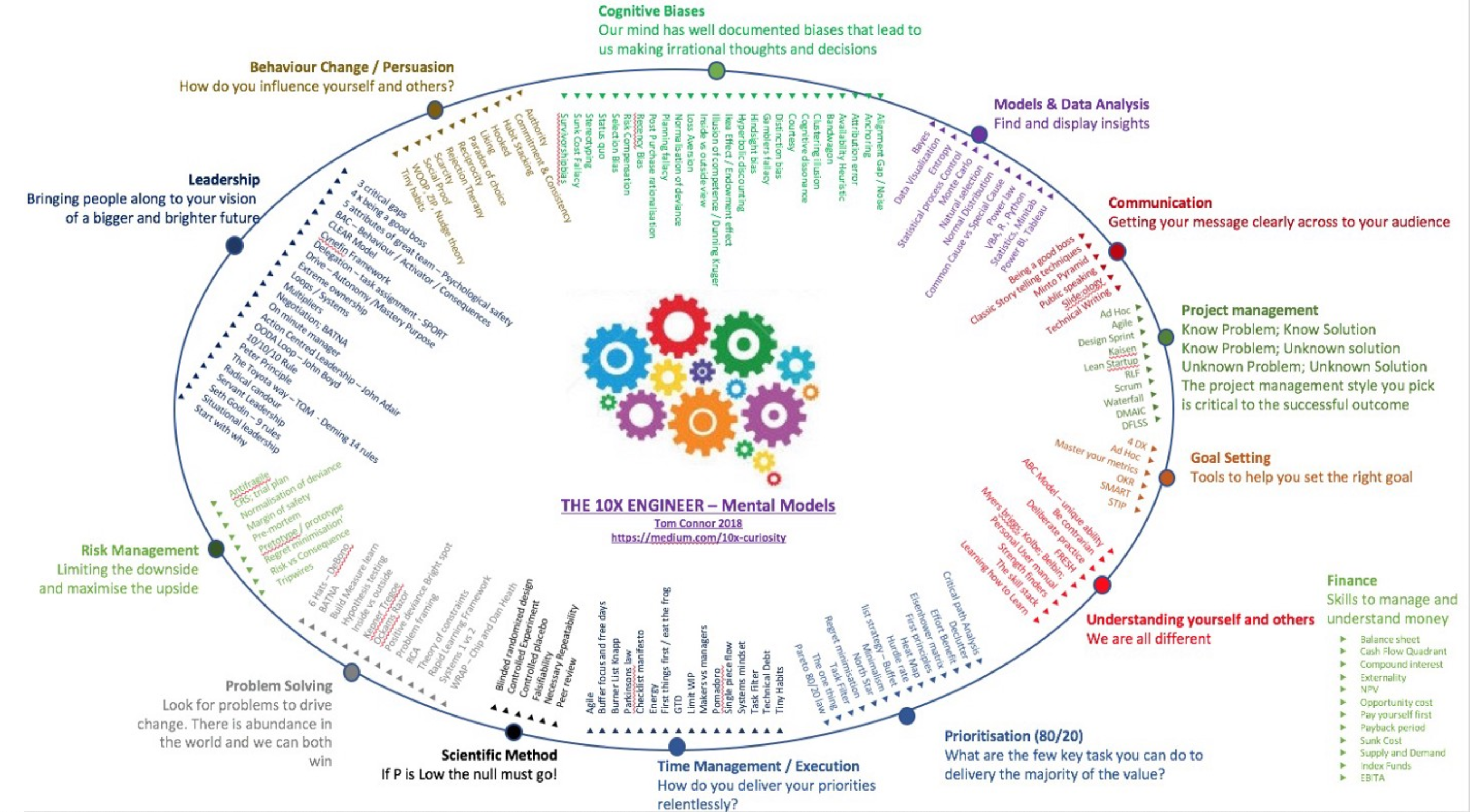
Mental Models - 10x Engineer Blog
And for a more detailed explanation and real-life applications, you can check out what Charlie Munger of Berkshire-Hathaway fame says about mental models.
So let's not get bogged down in facts and figures so much - although they do provide context - and instead let's try to look at some old things in a new way. And speaking of how things are looked at….

…why is marketing always looked upon as a necessary evil? Why are most physicians so down on marketing (notice I didn’t say down with) and yet, so quick to proclaim how much they know about marketing? Well, those two seemingly incongruent beliefs are actually explained by science (more on this in a bit).
Now while I may know a lot about marketing, and some may say I am AN expert, it doesn’t make me THE expert. To be considered THE expert, I would need to know more than 99.9% of you reading this. The more I read, study, or watch, the more I realize what there is to know, and it’s very humbling. In other words, the more I think I know, the more I realize I don’t know (see Postulate 2).
So while I’m not THE expert on ophthalmic practice marketing, I feel I’m safe in saying that I have acquired enough relevant knowledge and information over the past 25+ years that there is probably something of value I can impart to my colleagues.
Hopefully you will agree.
Now back to the science and why we think we know more about something than we really do.
Postulate 2: The less we know about something, the more we think we know about it
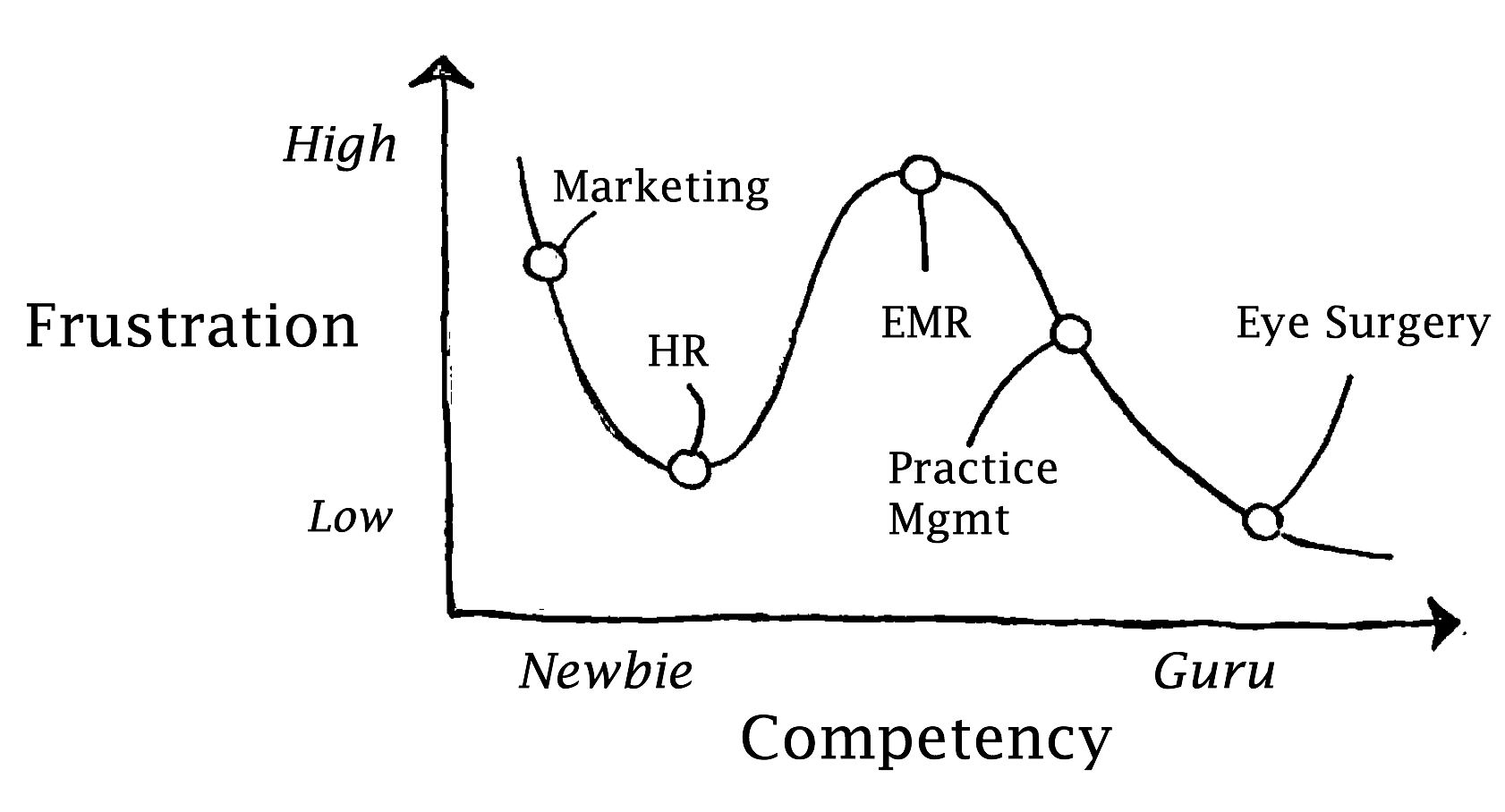
Dunning Kruger curve for ophthalmologists, Ultimate Ophthalmic Marketing Guide
I have written about the Dunning-Kruger effect before in our book, The Ultimate Ophthalmic Marketing Guide, in explaining why so many of us doctors - all very bright and highly-educated people - think that our intelligence translates to all other fields and all disciplines.
The graph has been iterated in numerous industries and the Y axis is usually labeled as confidence, but if you google Dunning-Kruger you will see a multitude of different takes, most serious, some hilarious. Regardless, the curve is fairly universal no matter which area of expertise is studied.
As Michael Simmons from the Accelerated Intelligence blog describes:
In 1999, psychologists Justin Kruger and David Dunning wrote a research paper, that introduced us to the Dunning-Kruger Effect.
The idea is simple but counterintuitive: In learning any new domain, our confidence is actually highest when we start. This is surprising because, rationally, we should have the lowest confidence when we know the least. However, Dunning and Kruger found that when we don’t know what we don’t know, we overestimate our abilities. Or, as philosopher Bertrand Russell famously put it: “The trouble with the world is that the stupid are cocksure and the intelligent are full of doubt.”
Of course, once we have our bubble burst and learn enough to recognize our ignorance, most people’s confidence takes a huge dip. It only slowly rebounds if we keep going. Unfortunately, many give up during the dip phase.
Now it’s possible you may know more about something than 99.9% of the population. But consider this: even those few special people that are at that level of expertise rarely express how smart they are. It just goes without saying. This is really just to point out the importance of having humility about what you don’t know. Chances are pretty good when someone tells you they know more about something than anyone else (sound familiar?), they really don’t know diddly.
So I’m not going to try to tell you there is a better way of doing things. Rather, I hope to help you persuade yourself that there is a better way of doing things.
But first.....
Who am I and why am I talking to you about marketing? (feel free to skip ahead if you’re not big on stories and sentimentality)
I have been in practice as a cornea specialist since 1995 and for many years was a managing partner of our large multi-subspecialty ophthalmology practice in north central Florida.
I have written, blogged, and podcasted on a variety of technology-related issues, including a long-running column in Ophthalmology Management magazine on EMR implementation. I probably learned more about EMR from researching and writing about it than I would have known otherwise (but don't ask me which EMR system you should get - I've been out of the market for a long time). I also currently blog on Healio and Covalent on ophthalmic practice marketing.
I first developed an interest in marketing in the 1980s when my late father - also an ophthalmologist and cornea specialist - reluctantly left academic medicine and started a private practice at the age of 50. (Actually it was not his first foray into private practice. When he was junior faculty at Columbia, he had a private office in another town after-hours (with the permission of his professor, of course). In those days, doctors were not allowed to advertise their medical practices. He once told me you could only put a sign in your window (literally!) and the medical society had the authority to come by and measure it to make sure it did not exceed the allowable dimensions for that jurisdiction.)
During his academic career, he was widely respected and published. He was the founder of The Castroviejo Society - which became The Cornea Society - and founding editor of The Cornea Journal - which became the official publication of The Cornea Society. and was a great clinician and teacher.
But after having been in academic medicine for so long, he didn't really understand the business of medicine at a time when it was becoming increasingly important. It was not enough to be a 'world-famous' eye doctor - in fact, he was known more around the globe than he was in his hometown of Gainesville, Florida. An ophthalmologist in his shoes, 30-40 years ago, would have been shocked to know that successful practices today are not run by the doctor's spouse - as his was - but by a certified administrator who might earn more than a primary care doctor. And as for 'marketing,' he got talked into some expensive advertising campaigns - filmed, not digital, in those days - which were not very effective.
Anyways, I worked for a short time in his office before my residency training as well as for a year after my training before ultimately joining the group I am currently with. In between, I completed a cornea fellowship. So I have a unique perspective having experienced the workings of a solo practice, an academic practice, and then a group practice.
Over time, my interest in marketing, coupled with a practice whose partners were visionary, never satisfied with the status quo and willing to try new things, led to many firsts among our peers including:
- a website (check out what our site looked like decades ago - go ahead and laugh but almost no physicians had websites at the time)
- a formal marketing department with a dedicated marketing director
- trademarking of corporate names and logos (and one of my first tasks was to change the original 'horse' logo - which met a lot of resistance by the way; although horses mean a lot to Ocala natives, since this is thoroughbred country, most outsiders thought we were veterinarians!)
- social media marketing before it was cool
- corporate style sheet
- use of a CRM (customer relationship management) system
- marketing funnels
- online patient education assets
- and operational process mapping.
Postulate 3: Information is not the same as knowledge
Google the following:
- when is the mating season of the love bug?
- how many aircraft can the USS Nimitz carry?
- what was Tom Hanks’ first movie?
OK, did you get your answers? So now you have three pieces of information that you did not have before (unless you are a Tom Hanks fan).
Now, what useful action can you take or important decision can you make using that information? Not much probably.
Information is data.
Knowledge, on the other hand, is the awareness and understanding of a subject.
There is more information today than we know what do to with. According to Forbes, 90% of the data in the world was created in the last two years!
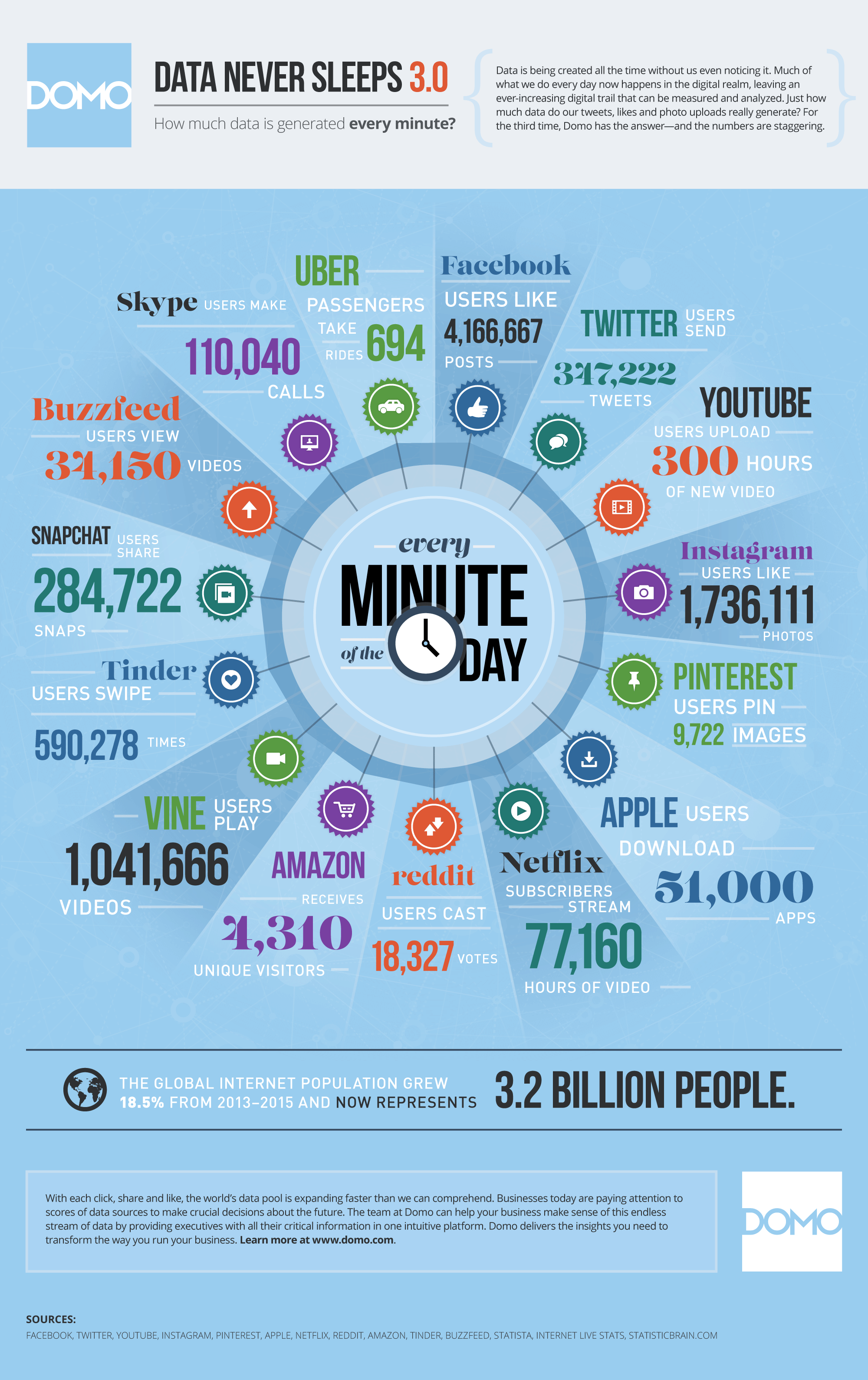
The amount of data created every minute of every day, www.domo.com
So it is important to be able to separate useless information from actionable knowledge.
In the former pot I would throw things like webpage clicks and Facebook likes, metrics that are often sold to practices by agencies as proof that their marketing tactics are effective. Now, while they may not be totally useless, they are generally not very useful unless they are linked and tracked to a specific campaign.
" Just because you can easily measure something doesn't mean it is useful."

ROry sutherland | Ogilvy & Mather
Postulate 4: There is a science to marketing
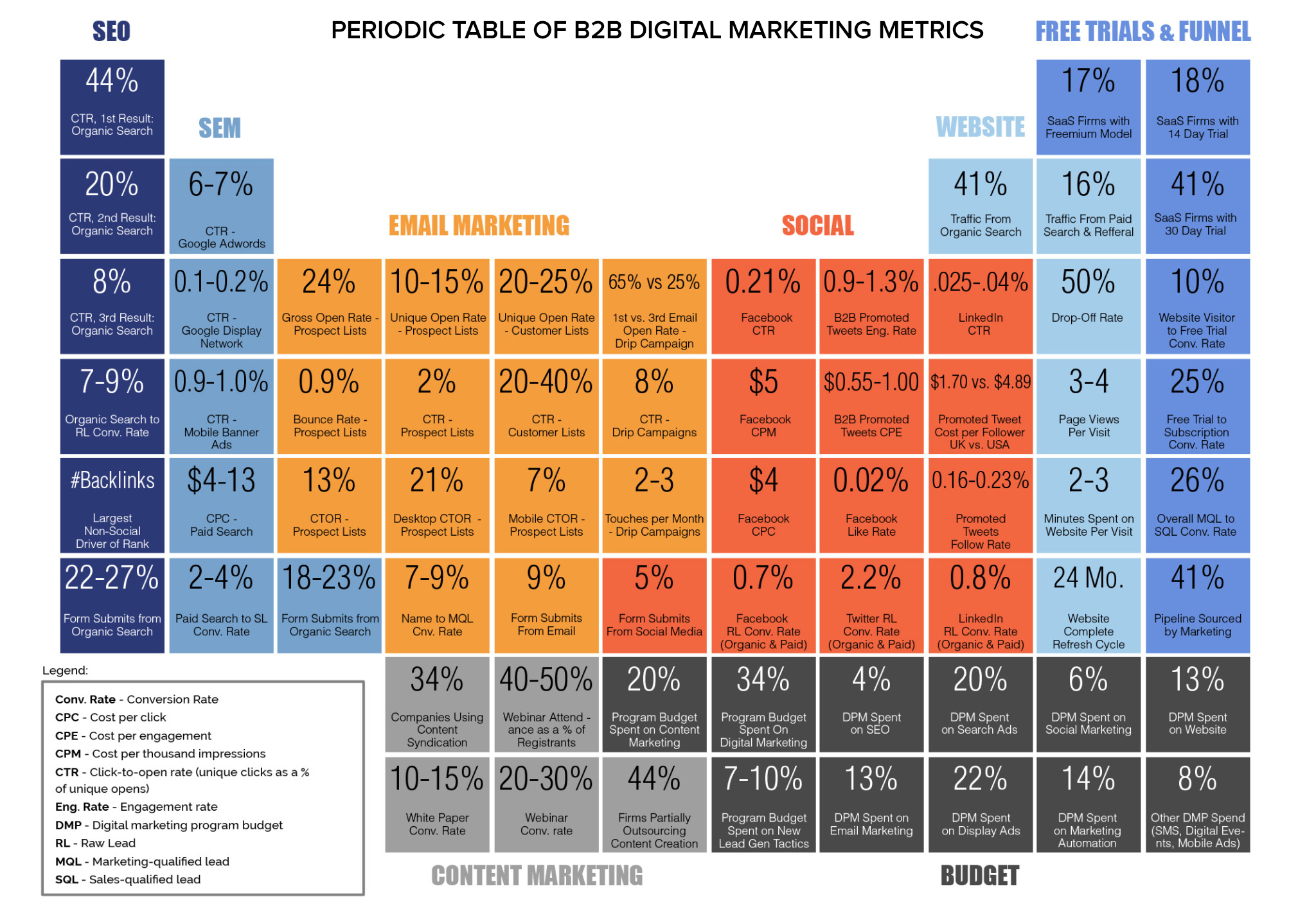
Most commonly used digital marketing metrics, www.freshsparks.com
This is just a sample of some of the metrics that might be used in a digital marketing campaign. And no, there won’t be a test on this later. It is merely to make the point that marketing, despite the fact that most people might think of it as just so much psychobabble, actually does have a science to it (in addition to the creative side).
Some savvy online marketers might split test a campaign (compare two different versions by alternating specific variables) and find the conversion rate only goes up 1%. But if they are spending tens of thousands of dollars on online advertising, this could translate to millions in gross profit.
What you want to get away from is the traditional medical practice marketing mantra of “There’s room in the budget for it!” every time someone introduces a shiny new object. That is, if there is unspent money in the marketing budget, then someone just needs to up and spend it; less important is why the money is being spent.
What you DO want to do is to move towards is evidence-based marketing.
Postulate 5: Good marketing is an investment, not just an expense
If you have the right information and you are using an evidence-based approach, then your practice marketing shouldn’t be viewed as simply an avoidable expense but as an investment.
Just as a diversified financial portfolio offers a better return on your investment, so does a diversified marketing portfolio.

A well-diversified marketing portfolio, from The Ultimate Ophthalmic Marketing Guide. More mature practices can afford to spend less on branding as a percentage of the total marketing budget.
So where do we start? If you are like most practices, it begins (and ends) with new patient acquisition, the most expensive kind of marketing there is.
From our Ultimate Ophthalmic Marketing Guide, these are three common practice marketing myths that still persist:
Unfortunately, they persist because the traditional marketing philosophy of spitballing a marketing budget and delegating it to employees or an outside agency takes the least amount of effort on the part of the owners. Concentrate primarily on new patients, focus on social media, throw in some monthly reports showing mostly useless data such as clicks and likes and a year-end spreadsheet showing that every dollar was successfully spent, and you’ve got a recipe for a marketing ‘strategy’ that is on autopilot (but likely headed nowhere).
Lather, rinse, repeat…
"You can’t manage what you
can’t measure."

peter drucker |marketing guru
The significance of that quote to our discussion is that if you don’t track your marketing efforts, you can’t measure them, and therefore you don’t really know if they are working.
So let's recap where we are so far:
Vision (Why)
Protect your future/practice/wealth by...
Goal (How)
Building a Resilient Practice by adapting and succeeding even in a crisis environment (and beyond) by...
Strategy (How)
Positioning yourself as a Premium Services Preeminent Practice through Scientific Marketing and the 7R Marketing Strategy by
(and here is the new part)...
The Tactics (the 'What')
Implementing your strategic objectives with Flywheels and Funnels
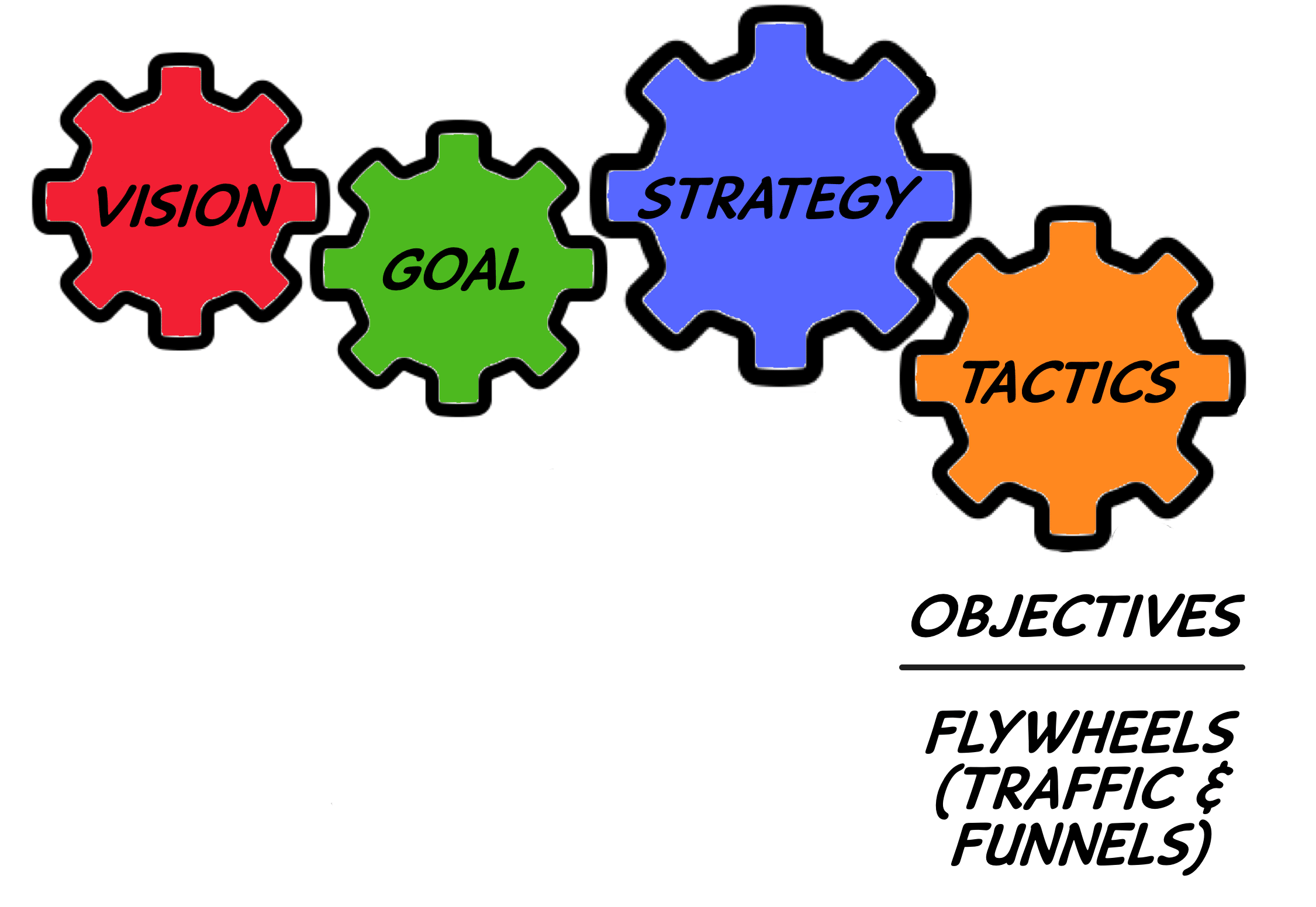
So now that we have covered the Vision of a resilient practice, and the Goal of making your practice a preeminent premium services one, let’s talk about how we actually get there: the strategies, the tactics, and the systems.
“You do not rise to the levels of your goals. You fall to the level of your systems.”

James Clear |Author. Atomic Habits
Funnels vs Flywheels
Even if you are not real savvy when it comes to marketing, you likely have at least some familiarity with the concept of a marketing funnel. Just like a physical funnel, stuff gets dumped into the broad top part of a marketing funnel - prospects - and stuff comes out of the bottom narrow part - customers.
And there are innumerable versions of marketing funnels depending on how the customer journey is defined, like
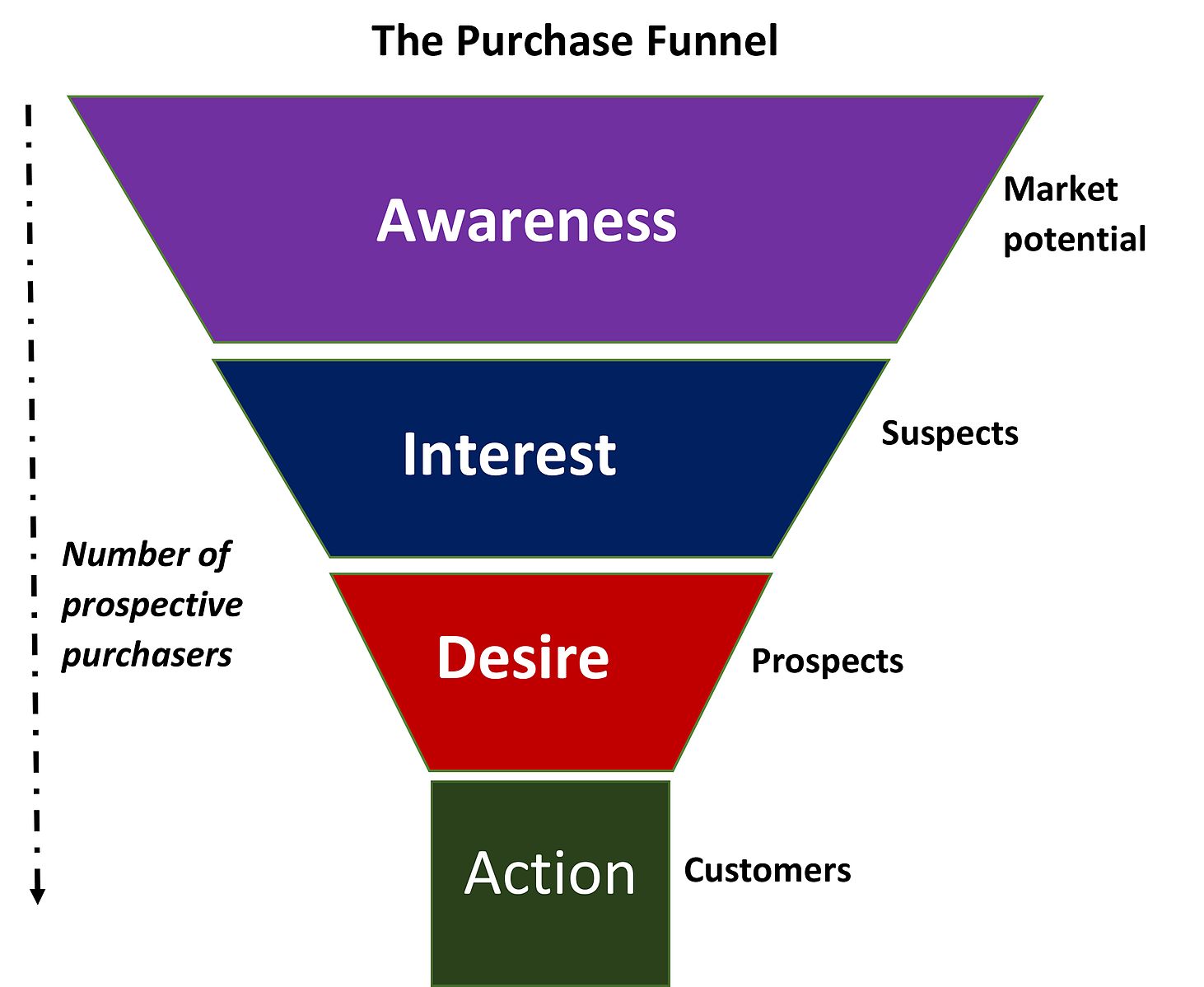
campaignmonitor.com
or
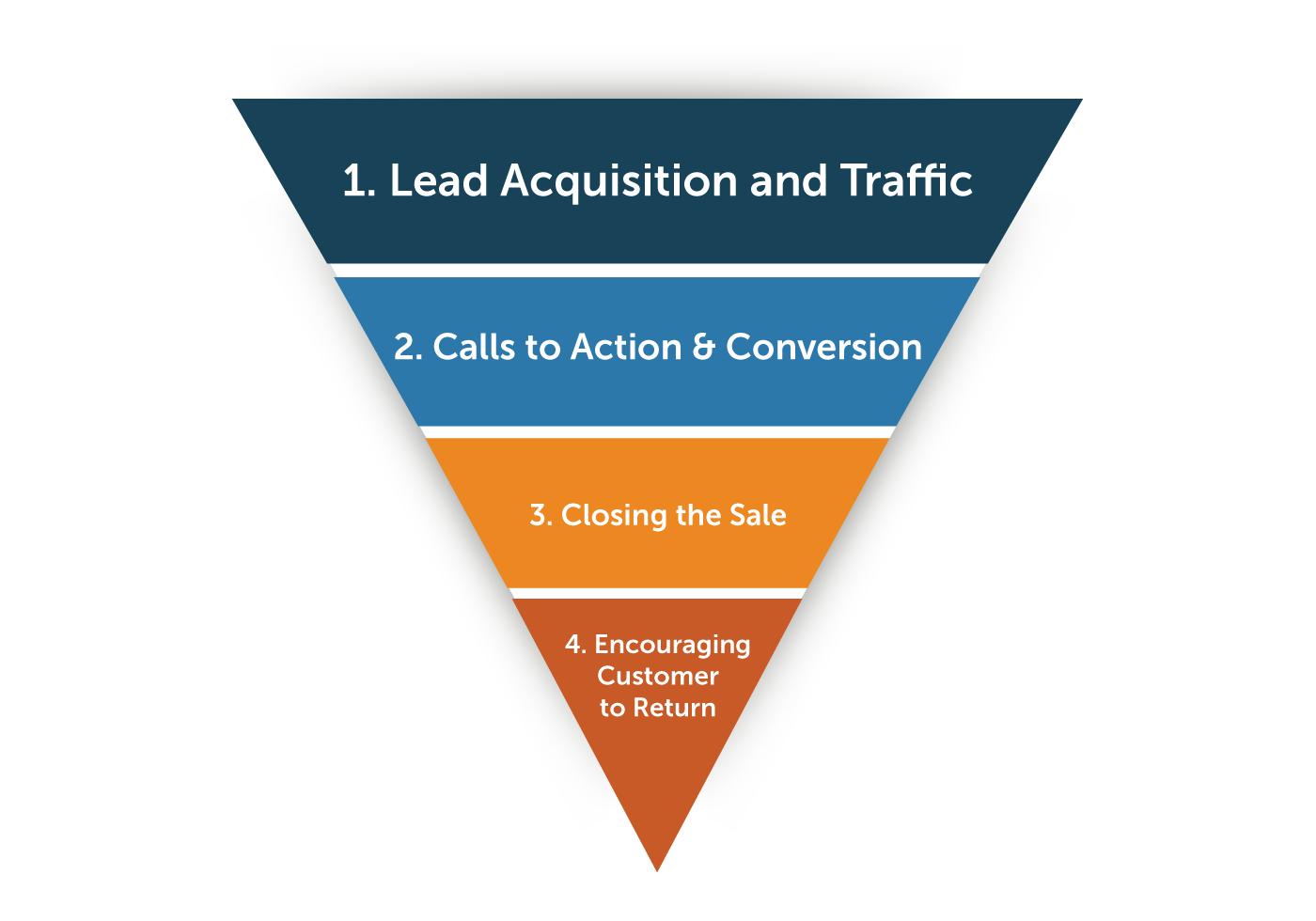
conquestgraphics.com
or
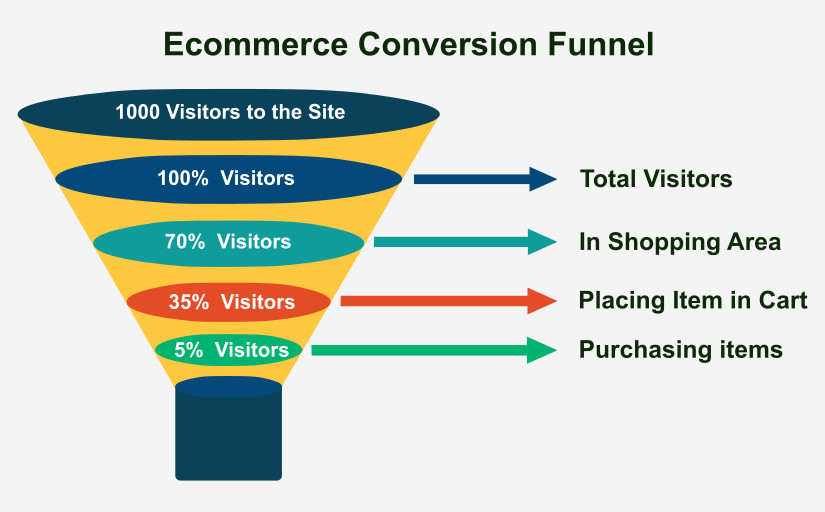
neilpatel.com
…I think you get the idea.
Marketing funnels should be an integral part of your marketing program as they allow for measuring, tracking and optimizing (sound familiar?) of your marketing campaigns.
Because...
If you are not MEASURING, you are not TRACKING.
And if you are not tracking, then you really don’t know how effective your marketing campaigns are.
Now......even though marketing funnels are critical, they are not sufficient.
Why do I say this?
Because marketing funnels are linear processes.
They take a prospect (input) and - hopefully - turn it into a satisfied patient (output). But they will only continue doing so as long as a steady stream of prospects are being continually dumped into the top of the funnel.
So you can already see that an enormous amount of effort and energy must be expended to keep the funnel going.
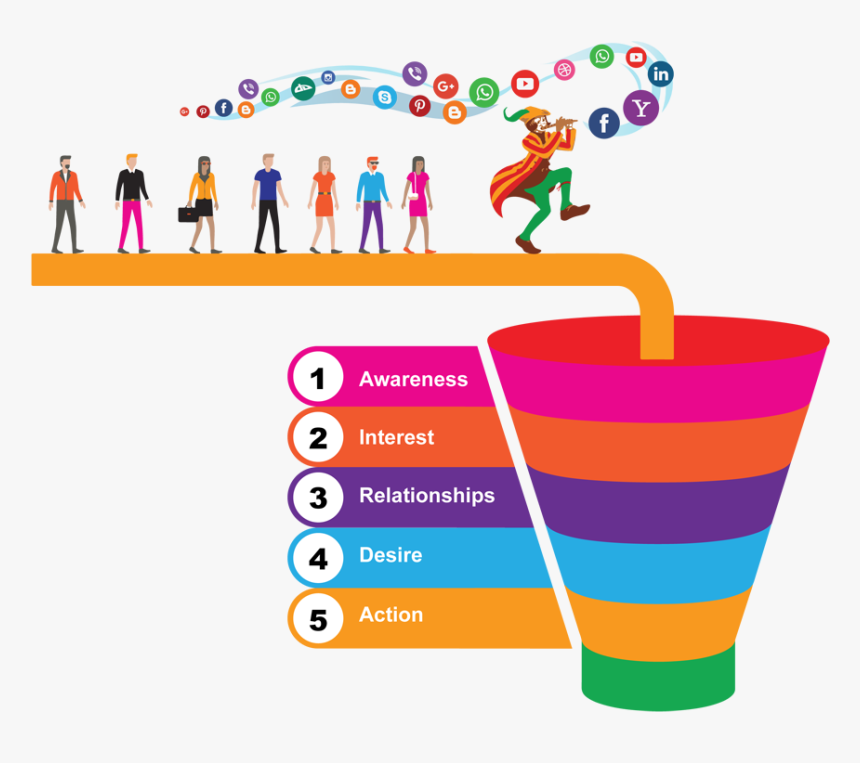
kindpng.com
But what if you could leverage the momentum that those patients dripping out of the bottom could potentially provide?

knowledgequest.com
Momentum:
the quantity of motion of a moving body, (P),
measured as a product of its (M)ass and (V)elocity,
or
P = M x V
Introducing Marketing Flywheels, or how we add momentum to our Marketing Funnels
A flywheel is a mechanical device specifically designed to efficiently store rotational energy due to angular momentum.

Trevithick locomotive flywheel, Wikipedia
Imagine if all of your marketing efforts, instead of being ‘one-and-done’ campaigns, actually contributed to the momentum of your practice growth
More Referrals → More Patients → More Procedures →
More Revenue → [to fund More Referrals]
with little additional effort on your part.
Evolution of the Marketing Flywheel
Unlike a marketing funnel, which has an input and output (and thus a beginning and end), a marketing flywheel is a dynamic process which, if properly designed, just keeps going and going.

Jim Collins, author of “Good to Great”, a consensus all-time top 10 business book, introduced the concept of the flywheel but, practically speaking, it was popularized by Jeff Bezos (CEO of Amazon), their Amazon Virtuous Cycle,

Amazon Virtuous Cycle
and their Product Sales Growth Flywheel
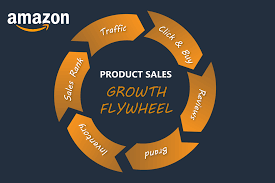
Amazon Product Sales Growth Flywheel
and can anyone argue with the success of Amazon?
Now, back to our own example.
How does the 7R Flywheel work in the real world, practically speaking?
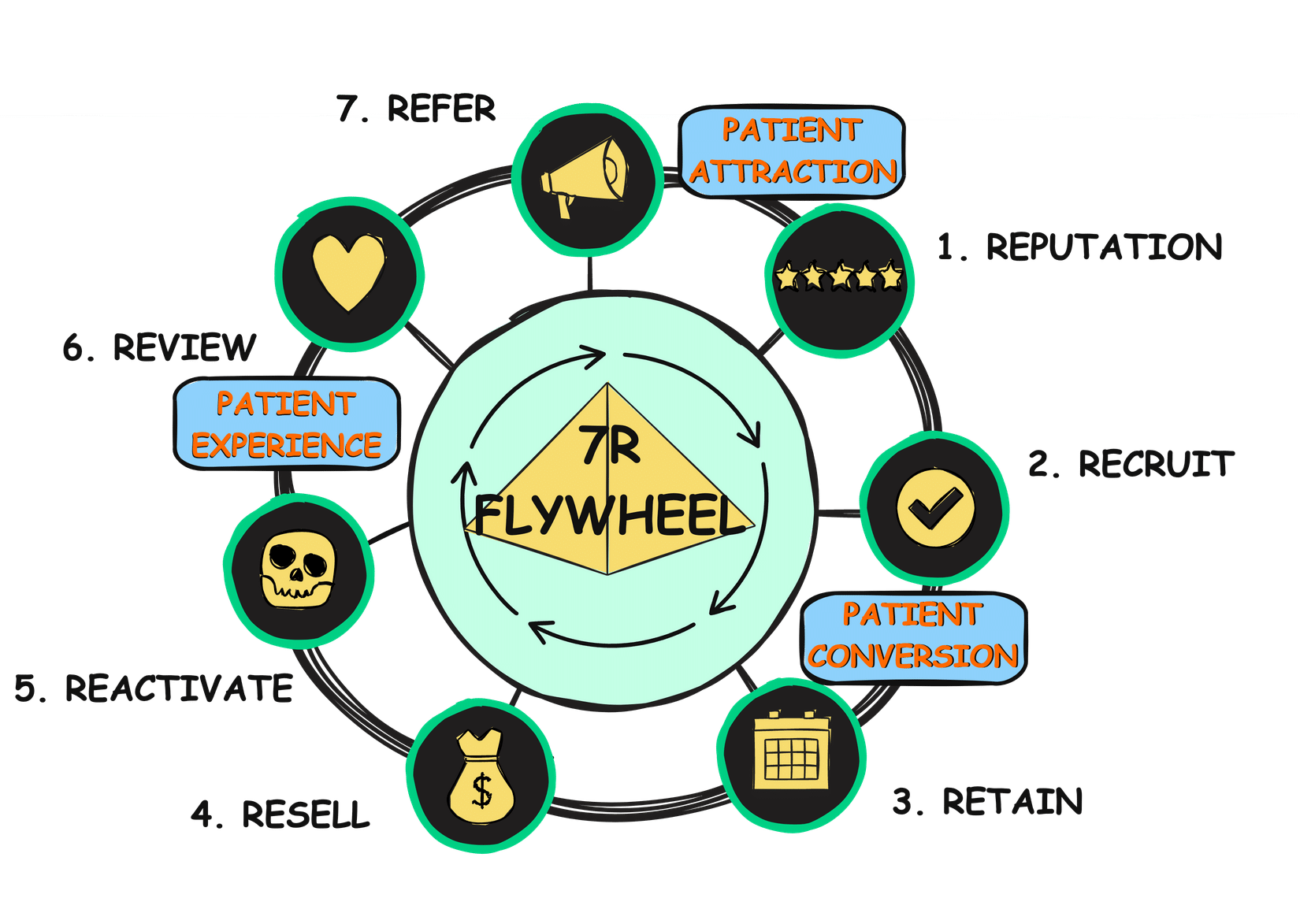
7R Flywheel incorporating the 7R Marketing Strategies (image copyright by author)
Starting at the top right of our 7R Flywheel....
1. Attract new patients, hopefully with your stellar Reputation!
2. Recruit new patients using a combination of branding and corporate identity (but don't rely too much on this), direct-response marketing, social media, etc.
Patient Conversion: These efforts 1 & 2 will result in conversion of prospects to patients.
3. Retain your existing patients by not neglecting them
4. Resell your existing patients on additional services you provide that they are (probably) not aware of.
5. Reactivate dormant patients by reminding them of the importance of regular visits as well as other services you provide.
Patient Experience: These efforts 3, 4 & 5 combine to hopefully provide an enjoyable patient experience.
6. Reviews that patients leave based on their experience with your practice spread the word to prospective patients.
7. Referrals are the pinnacle of your practice marketing and the linchpin in your marketing flywheel.
Patient Attraction: ideally, all of your marketing efforts thus far have made your practice an attractive option for prospective patients.
More specifics on our 7R strategies later, but this is the gist of how everything that you do should strive to turn your marketing funnels into self-perpetuating flywheels.
Types of Flywheels
We would break Flywheels into two categories:
- Tactical Flywheels and
- Operational Flywheels
Let’s take a deeper dive into each one (but don't freak out too much about the details).

It might be obvious, but if we tried to implement this all at once, we risk scuttling our entire effort. So rather than 'boil the ocean' we will make the case for strategically implementing these, in what may seem to be, at first, a counter-intuitive approach. But as you will see, it will gradually make a lot more sense.
Tactical Flywheels
As best as you can, you want to maximally leverage your marketing efforts so you’re not having to constantly acquire new patients to dump into the top of your funnel. Rather than constantly running campaigns in a linear fashion (and without a concerted strategy, predefined goals, or metrics), running them using a flywheel approach allows your marketing to build momentum, resulting in synergistic effects.
Tactical flywheels include such elements as
- Reputation Marketing Machine - marketing the practice reputation and physician reviews, not just collecting them
- Social Marketing Funnels - linking social media platforms to proscribed marketing funnels, not simply posting cute messages
- Funnel Automation - stringing marketing funnels and campaigns together using enabling technology (which we'll get to later)
Operational Flywheels
To properly implement and manage your marketing campaigns, you need to have your house in order and you need the proper ‘tools’. Marcus Lemonis, the entrepreneur of The Profit fame, distills the elements of success down to people, process, and product.
In the world of the 7R Authority Marketing Strategy, we propose
- People
- Process
- Technology stack
These two flywheels - Tactical and Operational - will overlap at the technology level since the Tech Stack (the portfolio of applications you will be using) will encompass activities on the tactical side such a CRM (customer relationship manager) or an autoresponder.
Outcomes and Metrics

So, how do we know all of this stuff is even working?
You are probably saying to yourself, "I'll just stick with handing my administrator a marketing budget and letting them figure out a way to spend it. This stuff you are talking about requires real thinking."
Well, that is the point! Delegating the work is what all of your competitors are doing.
So..... if you want an OUTCOME different from your competitors, then you want to DO things differently.
DON'T: "Hey, all of our competitors have billboards in the same vicinity that say 'We Offer Laser Cataract Surgery!' so we also need a billboard in the same vicinity that also says 'We Offer Laser Cataract Surgery!'"
Your marketing program should be able to tell you:
- What happened
- What is happening
- What should be happening
The What:
7R+1 - The 7R Marketing Strategy
and the One R (Resilience) to Rule Them All
All of our previous discussion was to make the case for having an evidence-based approach to your practice marketing. As much as possible, every marketing campaign should map to a specific 7R strategy below, it should be built with an end goal in mind, and have a method of tracking its metrics in order to continuously improve or optimize its results.
To recap, the 7R Strategies are:
- Reputation
- Review
- Retain
- Resell
- Reactivate
- Recruit
- Refer
Reputation

Reputation as we describe it refers to practice reputation. Because practices develop a reputation distinct from the doctors.
Review

Review refers to physician reviews. There is likely no physician practicing today that isn’t aware that their patients review them on online sites. But very few leverage these for marketing purposes.
Retain

Patient retention is one of the most overlooked strategies. Existing patients are often taken for granted. But the public is constantly barraged with messages from all sorts of businesses. So if they don’t feel like they are valued by their current provider, they will walk out the door and across the street to the competitor.
Resell

Reselling means that existing patients are made aware of a practice’s other services and offerings. It is surprising how often this is neglected. Many physicians are alarmed when a patient returns for a yearly exam and find out that they had a procedure or service elsewhere because they didn’t know it was offered at their current doctor’s office.
Reactivate

Another low-hanging fruit is reactivation of dormant patients. Appointment cards might be lost or forgotten so patients need to be reminded so that the practice is kept ‘top of mind.’
Recruit

Recruitment of new patients is typically what most practices think about when the word marketing is mentioned. And while new patients are important life-blood for most practices, especially surgical specialties, they are also the most expensive to acquire.
Refer

Referrals are the pinnacle of medical practice marketing. If a practice could rely solely on referrals, their cost of marketing would be practically zero. Alas, this is not possible. But at least it is something to aspire towards. By leveraging the other 7R strategies, referrals become more commonplace.
Ready to Implement the 7R Strategy? Click Below
